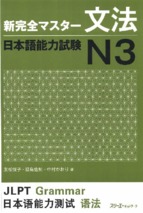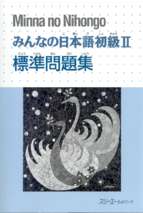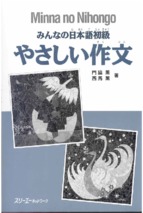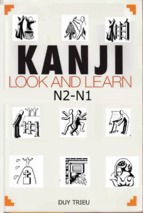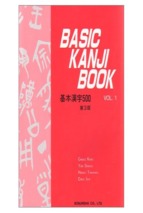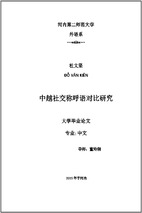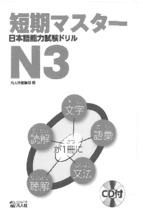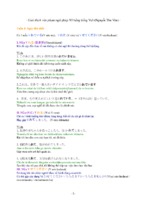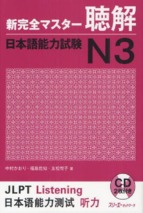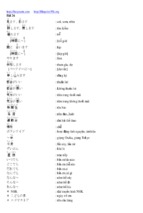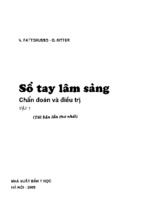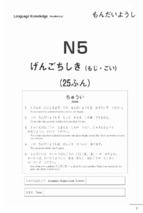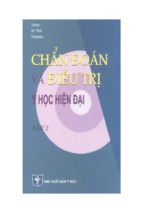Thuvientailieu.net.vn
INTERMEDIATE KOREAN:
A GRAMMAR AND WORKBOOK
Intermediate Korean: A Grammar and Workbook comprises an
accessible reference grammar and related exercises in a single volume.
This workbook presents twenty-four individual grammar points,
covering the core material which students would expect to encounter
in their second year of learning Korean. Grammar points are followed
by examples and exercises which allow students to reinforce and
consolidate their learning.
Intermediate Korean is suitable for both class use as well as
independent study.
Key features include:
•
•
•
•
•
•
clear, accessible format
many useful language examples
all Korean entries presented in Hangul with English translations
jargon-free explanations of grammar
abundant exercises with full answer key
subject index.
Clearly presented and user-friendly, Intermediate Korean provides
readers with the essential tools to express themselves in a wide variety
of situations, making it an ideal grammar reference and practice
resource for students with some knowledge of the language.
Andrew Sangpil Byon is Associate Professor at the State University of
New York at Albany, where he teaches courses in Korean language
and civilization.
Thuvientailieu.net.vn
Other titles available in the Grammar Workbooks series are:
Basic Cantonese
Intermediate Cantonese
Basic Chinese
Intermediate Chinese
Basic Dutch
Intermediate Dutch
Basic German
Intermediate German
Basic Irish
Intermediate Irish
Basic Italian
Basic Korean
Intermediate Korean
Basic Polish
Intermediate Polish
Basic Russian
Intermediate Russian
Basic Spanish
Intermediate Spanish
Basic Welsh
Intermediate Welsh
Thuvientailieu.net.vn
INTERMEDIATE KOREAN:
A GRAMMAR AND
WORKBOOK
Andrew Sangpil Byon
Thuvientailieu.net.vn
For my parents, James Ki Yong and Gloria Hye Ja Pyon
First published 2010
by Routledge
2 Park Square, Milton Park, Abingdon, Oxon OX14 4RN
Simultaneously published in the USA and Canada
by Routledge
270 Madison Ave, New York, NY10016
Routledge is an imprint of the Taylor & Francis Group, an informa business
This edition published in the Taylor & Francis e-Library, 2009.
To purchase your own copy of this or any of Taylor & Francis or Routledge’s
collection of thousands of eBooks please go to www.eBookstore.tandf.co.uk.
© 2010 Andrew Sangpil Byon
All rights reserved. No part of this book may be reprinted
or reproduced or utilised in any form or by any electronic,
mechanical, or other means, now known or hereafter invented,
including photocopying and recording, or in any information
storage or retrieval system, without permission in writing
from the publishers.
British Library Cataloguing in Publication Data
A catalogue record for this book is available from the British Library
Library of Congress Cataloguing-in-Publication Data
Byon, Andrew Sangpil.
Intermediate Korean : a grammar & workbook / Andrew Sangpil Byon.
p. cm.
Simultaneously published in the USA and Canada.
1. Korean language—Grammar—Problems, exercises, etc. 2. Korean language—
Textbooks for foreign speakers—English. I. Title.
PL913.B965 2009
495.7′82421—dc22
2008053381
ISBN 0-203-87590-7 Master e-book ISBN
ISBN10: 0-415-54714-8 (hbk)
ISBN10: 0-415-77488-8 (pbk)
ISBN10: 0-208-87590-7 (ebk)
ISBN13: 978-0-415-54714-7 (hbk)
ISBN13: 978-0-415-77488-8 (pbk)
ISBN13: 978-0-203-87590-2 (ebk)
Thuvientailieu.net.vn
CONTENTS
1
2
3
G
4
5
6
7
8
9
10
11
Preface
ix
The intimate speech level and the plain speech level
~㠊/㞚, ~⓪/ච┺, ~┞/(㦒)⌦?, ~㞚/㠊⧒, ~㧦
1
Sentence-final endings
~㰖㣪, ~ῆ㣪, ~⍺㣪
11
Particles
⽊┺, 㻮⩒, ṯ㧊, Ⱒ䋒, Ⱎ┺, Ⱎ㩖, 㫆㹾, 㠦
19
Auxiliary verbs I
~㠊/㞚G㡺┺, ~㠊/㞚GṖ┺, ~㠊/㞚G⽊┺
27
Auxiliary verbs II
~㠊/㞚G⌊┺, ~㠊/㞚G⻚Ⰲ┺, ~ἶGⰦ┺, ~㠊/㞚G㭒┺,
~㠊/㞚G✲Ⰲ┺
33
Auxiliary verbs III
~㠊/㞚G⏩┺, ~㠊/㞚G⚦┺, ~㠊/㞚G㧞┺, ~㠊/㞚䞮┺,
~㠊/㞚㰖┺
42
Clausal conjunctives (purpose or intention)
~(㦒)⩂, ~(㦒)⩺ἶ, ~☚⪳G
51
Clausal conjunctives (reasons and cause)
~㠊/㞚㍲, ~(㦒)┞₢, ~ⓦ⧒ἶ
61
Clausal conjunctives (conditions)
~(㦒)Ⳋ, ~㠊/㞚㟒, ~(㦒)ඥ㑮⪳, ~Ệ✶
72
Clausal conjunctives (listing and choice)
~ἶ, ~(㦒)Ⳇ, ~Ệ⋮, ~✶㰖
85
Clausal conjunctives (time)
~(㦒)Ⳋ㍲, ~㧦Ⱎ㧦, ~┺ṖG
95
Thuvientailieu.net.vn
v
12
Contents
Clausal connectives (background)
~⓪◆/(㦒)ච◆
105
Clausal connectives (although)
~㰖Ⱒ, ~(㦒)⋮, ~㠊/㞚☚
113
Permission, prohibition, and obligation
~㠊/㞚☚G♮┺, ~(㦒)ⳊG㞞G♮┺, 㞞G~(㦒)ⳊG㞞G♮┺/~㰖G
㞠㦒ⳊG㞞G♮┺, ~㠊/㞚㟒G♮┺/䞮┺
120
Passives and causatives
~㧊, ~䧞, ~Ⰲ, ~₆, ~㤆, ~ῂ, ~㿪, ~ỢG䞮┺
129
The noun-modifying endings
~⓪, ~(㦒)ච, ~(㦒)ඥ
137
G
Describing the appearance of actions or states of affair
~⓪/(㦒)ච/(㦒)ඥGộGṯ┺, ~⓪/(㦒)ච/(㦒)ඥG⳾㟧㧊┺,
~⓪/(㦒)ච/(㦒)ඥG ❅䞮┺, ~⋮/(㦒)චṖG⽊┺, ~㠊/㞚G⽊㧊┺G
146
18
G
Post modifiers I
₎, 㩗, 㧒, ☯㞞, ☚㭧, 㭧, 䘎
157
19
G
Post modifiers II
╖⪲, 䤚㠦, 㻯, ⧢㠦, ộ, ㄪ, ➢
166
20
Ability and possibility
~(㦒)ඥG㑮G㧞┺/㠜┺, ~(㦒)ඥG㭚G㞢┺/⳾⯊┺,
~(㦒)ඥGⰂṖG㠜┺
178
Indirect question form
~⓪/(㦒)ච/(㦒)ඥ㰖
186
The retrospective suffix
~▪
195
Nominalizing endings
~₆ and ~(㦒)ත
205
Direct and indirect quotation
~(㧊)⧒ἶG䞮┺, ~(ⓦ)ච┺ἶG䞮┺, ~ⓦ⌦ἶG䞮┺/ⶑ┺,
~(㦒)⧒ἶG䞮┺, ~㧦ἶG䞮┺
219
Key to exercises
228
Index
279
13
14
15
16
17
21
22
23
24
vi
Thuvientailieu.net.vn
PREFACE
Intermediate Korean: A Grammar and Workbook is a sequel to its sister
volume Basic Korean: A Grammar and Workbook, and it likewise focuses
on providing an accessible reference grammar explanation and related
exercises in a single volume. It is designed for independent English-speaking
adult Korean-as-a-foreign-language (KFL) learners who intend to maintain
and strengthen their knowledge of essential Korean grammar and for
classroom-based learners who are looking for supplemental grammar
explanations and practices. Consequently, this book differs from existing
KFL materials whose primary purpose is to help KFL learners acquire
four language skills, such as listening, speaking, reading, and writing as well
as cultural knowledge.
The layout of this book also differs from those of existing KFL materials. For instance, a typical KFL textbook chapter may include model dialogues, followed by vocabulary lists, grammar explanations, cultural notes,
and exercises. In contrast, following the pattern of Basic Korean and other
Grammar Workbooks of the Routledge series, every unit of Intermediate
Korean focuses on presenting jargon-free and concise grammar explanations, followed by relevant grammar exercises.
This book has 24 units, and it does not take a functional-situational
approach in grouping and/or sequencing target grammatical points. Rather
it sequences and covers grammatical points according to their grammatical
categories (e.g., sentence endings, conjunctives, particles, and so on), so
that learners can use the book as a reference material as well as a practice
material. The exercises at the end of each unit are designed primarily to
reinforce the target grammatical points.
All Korean entries are presented in Hangul (the Korean alphabet) with
English translations to facilitate understanding. Accordingly, it requires
that learners familiarize themselves with Hangul, before going on to the
book. In addition, when translating Korean entries into English, efforts
were made to reflect the Korean meaning as closely as possible. Consequently,
some learners may feel certain English translations do not reflect typical
English usages. However, the direct translation approach was employed
for pedagogical purposes.
Thuvientailieu.net.vn
vii
In writing this book, I have been fortunate to have the assistance and
support of many people. I would like to thank my colleagues in the Department of East Asian Studies at the University at Albany, State University
of New York, who were supportive of this project. I am grateful to anonymous reviewers for their constructive and valuable comments. I would like
to express sincere gratitude to Sophie Oliver for initially encouraging this
project and to the editorial and production teams of Routledge—Andrea
Hartill, and Samantha Vale Noya—for their advice and support throughout the process. My thanks also go to Neil Dowden for his careful and
thoughtful copy-editing service and to Kathy Auger at Graphicraft for her
kind assistance during the final stage of production. Finally, as always, my
special thanks go to my wife, Isabel, who, with her optimism and encouragement, makes it possible for me to do what I really love to do. Of course,
I bear all responsibility for any shortcomings and errors in the text.
Preface
viii
Thuvientailieu.net.vn
UNIT 1
The intimate speech level and
the plain speech level
The intimate speech level
The intimate speech level is in general used in the following situations: by
adults when addressing children, by parents when addressing their kids,
by children when addressing their peers, and by adult friends when addressing their childhood friends (or friends whose relationships are close enough
to switch to the intimate level from the polite level).
The intimate speech level ending is ~㠊/㞚. The choice of ~㠊 or ~㞚 is
the same with that of the polite speech level ending ~㠊㣪/㞚㣪. ~㞚 is
used after a stem that ends in a bright vowel, 㡺 or 㞚 (e.g., 㺔┺ “find”
=> 㺔㞚), while ~㠊 is used with the stem that ends in any other vowels
(e.g., ⺆㤆┺ “learn” => ⺆㤢). Consider the following examples:
Ṗ┺ “go”
⺆㤆┺ “learn”
Ṗ⯊䂮┺ “teach”
ⲏ┺ “eat”
䞮┺ “do”
㧞┺ “have/exist”
㧊┺ “be”
㞚┞┺ “not be”
Polite speech level
Ṗ㣪
⺆㤢㣪
Ṗ⯊㼦㣪
ⲏ㠊㣪
䟊㣪
㧞㠊㣪
㧊㠦㣪
㞚┞㠦㣪
Intimate speecsh level
Ṗ
⺆㤢
Ṗ⯊㼦
ⲏ㠊
䟊
㧞㠊
㧊㟒
㞚┞㟒
As seen above, one can generate the intimate speech level from the
polite speech level, simply by removing 㣪. One exception is that the
copula 㧊┺/㞚┞┺ takes slightly different forms: 㧊㟒 instead of 㧊㠦,
and 㞚┞㟒 instead of 㞚┞㠦.
Just like the polite speech level ending ~㠊㣪/㞚㣪, the intimate speech
level ending ~㠊/㞚 is used for all sentence types: declarative, interrogative,
imperative, and propositive. For instance, consider the following:
1
Thuvientailieu.net.vn
1
The intimate
speech level
and the plain
speech level
ⰺ㧒G⥆㠊 “(I) run everyday.”
ⰺ㧒G⥆㠊? “(Do you) run everyday?”
ⰺ㧒G⥆㠊! “Run everyday!”
ⰺ㧒G⥆㠊 “(Let us) run everyday.”
Koreans use contextual elements as well as intonation (e.g., rising intonation for a question) to figure out what intimate speech level ending
~㠊/㞚 is used for a specific sentence type.
The plain speech level
The plain speech level ending sounds more blunt and direct than other
speech levels: deferential, polite, and intimate. The plain speech level is
primarily used in the following three contexts: When one addresses a child,
his/her childhood friends, or younger siblings; when the speaker talks to
himself/herself or wants to draw the listener’s attention to information
that is noteworthy or provoking; when one writes (e.g., personal essay,
prose, newspaper articles, academic papers, diary, and so forth).
Unlike the intimate and the polite speech levels that use the same
endings for different sentence types, the plain speech level has different
endings for different sentence types, as shown below.
Declarative
~⓪/ච┺ (for verb stems)
Ṗ┺ “go”
ⲏ┺ “eat”
Ὃ䞮┺ “study”
Ṛ┺
ⲏ⓪┺
Ὃ䞲┺
~┺ (for adjective and copula stems)
㿻┺ “cold”
₾⊭䞮┺ “clean”
㧊┺ “be”
㿻┺
₾⊭䞮┺
㧊┺
~㠞/㞮┺ (for all predicate stems in the past tense)
㞺✲⮮ṖG䞯ᾦ㠦GṪ┺G “Andrew went to school.”
⋶㝾ṖG㿪㤶┺G“The weather was cold.”
㧊G₾⊭䟞┺G“The room was clean.”
⁎G⋾㧦ṖG䞲ῃG㌂⧢㧊㠞┺ “That man was a Korean.”
2
Thuvientailieu.net.vn
Interrogative
The plain
speech level
~┞/(㦒)⌦? (for all predicate stems)
Ṗ┺G“go”
ⲏ┺G“eat”
Ὃ䞮┺ “study”
㫡┺ “good”
㿻┺ “cold”
₾⊭䞮┺ “clean”
㧊┺ “be”
Ṗ┞? (or Ṗ⌦?)
ⲏ┞? (or ⲏ⌦?)
Ὃ䞮┞? (or Ὃ䞮⌦?)
㫡┞? (or 㫡⌦?) / 㫡㦒⌦? (for writing)
㿻┞? (or 㿻⌦?) / 㿪㤆⌦? (for writing)
₾⊭䞮┞? (or ₾⊭䞮⌦?)
㧊┞? (or 㧊⌦?)
~㠞/㞮┞/(㦒)⌦? (for all predicate stems in the past tense)
㞺✲⮮ṖG䞯ᾦ㠦GṪ┞? “Did Andrew go to school?”
⋶㝾ṖG㿪㤶┞? “Was the weather cold?”
㧊G₾⊭䟞┞? “Was the room clean?”
⁎G⋾㧦ṖG䞲ῃG㌂⧢㧊㠞┞? “Was that man a Korean?”
Imperative (only for verb stems)
~㞚⧒ (after a stem that ends in 㡺 or 㞚)
~㠊⧒ (after a stem that ends in any other vowels)
Ṗ┺ “go”
ⲏ┺ “eat”
Ὃ䞮┺ “study”
Ṗ⧒
ⲏ㠊⧒
Ὃ䟊⧒
Propositive (only for verb stems)
~㧦
Ṗ┺ “go”
ⲏ┺ “eat”
Ὃ䞮┺ “study”
Ṗ㧦
ⲏ㧦
Ὃ䞮㧦
Note that the plain speech level imperative ending ~㠊⧒/㞚⧒Gand propositive ending ~㧦 are used only for verb stems, and they are not conjugated
for the tense.
3
Thuvientailieu.net.vn
1
Exercises
The intimate
speech level
and the plain
speech level
Key vocabulary for Unit 1 exercises
ṖỢ store
Ṗ bag
Ṗ⯊䂮┺ to teach
ṫ㦮 lecture
Ị⍞┺ to cross over
ἓ㺆ὖ police officer
ὒ㧒 fruits
Ὃ䞮┺ to study
Ὃ㡆 public performance/play
⁎Ⰲ┺ to draw
⁎Ⱂ painting/picture
₆┺Ⰲ┺ to wait
₆ feeling/mood
₾⊭䞮┺ to be clean
⋮㊮┺ to be bad
⋶㝾 weather
⌊⩺Ṗ┺ to go down
⋮ older sister
ⓦ⋢ feeling/mood
ⓦⰂ┺ to be slow/to be sluggish
┺Ⰲ bridge/legs
╁┺ to close/to shut
╂┺ to be sweet
╊⺆ cigarette
▮㰖┺ to throw
➆⦑䞮┺ to be warm
➆⯊┺ to follow
⟶⋮┺ to depart/to take leave of/to leave
⥾ỗ┺ to be hot (water)/to be heated
⪲ⰾ㓺 romance
4
Ⱎ㔲┺ to drink
Ⱎ䂮┺ to finish
Ⱒ⋮┺ to meet
ⲎⰂ head/hair (of one’s head)
ⲏ┺ to eat
Ⲗ┺ to be far
ⶎ door
⹕┺ to trust/to believe
㊮┺ to be busy
Thuvientailieu.net.vn
┺ to receive
foot
⺆㤆┺ to learn
⻚Ⰲ┺ to throw away
⻚㓺 bus
⻪㧎Gcriminal
⽊⌊┺ to send
⽊┺ to see/to watch/to read
アⰂ┺ to borrow
Key
vocabulary
for Unit 1
exercises
㌂ὒ apple
㌂⧢ person
㌂ⶊ㔺 office
㌂㰚 picture
㏢䙂 package
㏦ hand
㔲䠮 test/examination
㔶┺ to wear (shoes/socks)
㔶ⶎ newspapers
㕇㕇䞮┺ to be fresh
㝆⩞₆ trash/garbage
㞑┺ to wash
㞚┞┺ not be
㞚⧮ the base/the lower part
㞚⻚㰖 father
㞚䂾 morning
㞚䝚┺ to be sore/to be painful
㟧Ⱖ socks
㠊⪋┺ to be difficult
㠎㩲 when
㡊┺ to open
㡊㐶 keys
㡗䢪 movie
㣎䂮┺ to shout
㧊⻞ this time
㧒 work/matter/errand
㧒⽎㠊 the Japanese language
㧒㹣 early
㧓┺ to read
㧛┺ to wear (clothes)
㧦┺ to sleep
㧦㩚Ệ bicycle
㧷┺ to catch/to hold
㨂⹎㧞┺ to be interesting
5
Thuvientailieu.net.vn
㩧㔲 dishes/plates
㫆㣿䞮┺ to be quiet
㫡┺ to be good/to be right/to be beneficial
㭒┺ to give
㭒Ⱖ weekend
㭧ῃ㠊 the Chinese language
㰧 house
1
The intimate
speech level
and the plain
speech level
㹾 car
㺔┺ to look for/to seek for
㺓ⶎ window
㺛 book
䂲ῂ friend
䄺䞒 coffee
䋂Ợ aloud
䌖┺ to ride
䕪┺ to sell
䝚⧧㓺 France
䞒㤆┺ to smoke
䞮⓮ sky
䞮┺ to do
䠺㠊㰖┺ to get scattered/to be separated/to break up
䦦Ⰲ┺ to be cloudy
Exercise 1.1
Conjugate each verb or adjective in parentheses with the intimate speech
level ending. Then translate the sentence, as shown in the example.
Example: 䞯ᾦ㠦 (Ṗ┺) / imperative
= 䞯ᾦ㠦GṖ. “Go to school.”
6
1
2
3
4
5
6
7
8
9
10
11
12
┺Ⰲ⯒ (Ị⍞┺) / imperative
ⶎ㦚 (㡊┺) / imperative
㹾⯒ (䕪┺) / propositive
㝆⩞₆⯒ (⻚Ⰲ┺)G/ declarative
㺓ⶎ㦚 (╁┺) / imperative
Ὃ㡆㦚G㧒㹣 (Ⱎ䂮┺) / imperative
㩧㔲⯒ (アⰂ┺) / propositive
㦚 (㞑┺) / declarative
㧒㹣 (㧦┺) / propositve
㧦㩚Ệ⯒ (䌖┺) / interrogative
ⓦ⋢㧊 (㫡┺) / declarative
ṫ㦮Ṗ (㨂⹎㧞┺) declarative
Thuvientailieu.net.vn
13
14
15
16
17
18
19
20
䝚⧧㓺G㌂⧢ (㧊┺) /interrogative
㧒㦚 (䞮┺) / imperative
ἓ㺆ὖ㧊 (㞚┞┺) /interrogative
㰧㧊 (Ⲗ┺) / declarative
㌂ὒṖ (╂┺) / declarative
ⲎⰂṖ (㞚䝚┺) / interrogative
䞮⓮㧊 (䦦Ⰲ┺) / declarative
ὒ㧒㧊 (㕇㕇䞮┺) / interrogative
Exercise 1.2
Exercise 1.2
Conjugate each verb or adjective in parentheses with the declarative plain
speech level ending. Then translate each sentence.
Example: ㍲㤎㠦 (Ṗ┺)
= ㍲㤎㠦GṚ┺. “(I) go to Seoul.”
1
2
3
4
5
6
7
8
9
10
㞚䂾㦚 (ⲏ┺)
㭧ῃ㠊⯒ (Ṗ⯊䂮┺)
⋮⯒ (₆┺Ⰲ┺)
ⶒ㦚 (Ⱎ㔲┺)
㏢䙂⯒ (┺)
㧒⽎㠊⯒ (⺆㤆┺)
㌂ⶊ㔺㧊 (₾⊭䞮┺)
⻚㓺Ṗ (ⓦⰂ┺)
䄺䞒Ṗ (⥾ỗ┺)
㧊⻞G㭒Ⱖ㠦 (㊮┺)
Exercise 1.3
Conjugate each verb or adjective in parethensis with the interrogative
plain speech level ending. Then translate each sentence.
Example: 㓞䗒Ⱎ䅩㠦 (Ṗ┺)
= 㓞䗒Ⱎ䅩㠦GṖ┞? “Do (you) go to the supermarket?”
1
2
3
4
5
6
㠎㩲GṖỢGⶎ㦚 (╁┺)
㠊❪㍲G䂲ῂ⯒ (Ⱒ⋮┺)
㠎㩲 (⟶⋮┺)
㠊❪㍲ (Ὃ䞮┺)
╊⺆⯒ (䞒㤆┺)
㡊㐶⯒ (㺔┺)
7
Thuvientailieu.net.vn
1
The intimate
speech level
and the plain
speech level
7
8
9
10
⋶㝾Ṗ (➆⦑䞮┺)
㔲䠮㧊 (㠊⪋┺)
₆㧊 (⋮㊮┺)
㰧㧊 (㫆㣿䞮┺)
Exercise 1.4
Conjugate each verb or adjective in parethensis with the imperative plain
speech level ending. Then translate each sentence.
Example: 㤆㼊ῃ㠦 (Ṗ┺)
= 㤆㼊ῃ㠦GṖ⧒. “Go to the post office.”
1
2
3
4
5
6
7
8
9
10
┺Ⰲ⯒ (Ị⍞┺)
㞚⧮⪲ (⌊⩺Ṗ┺)
Ṗ㦚 (▮㰖┺)
㺓ⶎ㦚 (㡊┺)
㞚⻚㰖⯒ (➆⯊┺)
㞺✲⮮⯒ (⹕┺)
㟧Ⱖ㦚 (㔶┺)
㎪䁶⯒ (㧛┺)
㏦㦚 (㧷┺)
䋂Ợ (㣎䂮┺)
Exercise 1.5
Conjugate each verb or adjective in parenthesis with the propositive plain
speech level ending. Then translate each sentence.
Example: ☚㍲ὖ㠦 (Ṗ┺)
= ☚㍲ὖ㠦GṖ㧦. “(Let us) go to the library.”
8
1
2
3
4
5
6
7
8
9
10
㌂㰚㦚 (⽊⌊┺)
⁎Ⱂ㦚 (⁎Ⰲ┺)
⻪㧎㦚 (㧷┺)
㔶ⶎ㦚 (㧓┺)
㧒㦚 (Ⱎ䂮┺)
䌳㔲⯒ (䌖┺)
䄺䞒㑣㠦㍲ (䠺㠊㰖┺)
⪲ⰾ㓺G㡗䢪⯒ (⽊┺)
㺛㦚 (㭒┺)
㝆⩞₆⯒ (⻚Ⰲ┺)
Thuvientailieu.net.vn
Exercise 1.6
Exercise 1.6
Underline the correct English translation of the Korean phrase below.
Example: 㧦㩚Ệ⯒G䌖㧦.
(Let us) ride a bike / Ride a bike.
1 Page 19 ⯒G㧓㠊⧒U
(Let us) read page 19 / Read page 19.
2 ㏦㦚G㞑㧦.
Wash (your) hands / (Let us) wash (our) hands.
3 ⶎ㦚G╁㞚⧒.
(Let us) close the door / Close the door.
4 ☞㦚GアⰂ㧦.
(Let us) borrow (his) money / Borrow (his) money.
5 㠦㍲G⋮Ṗ⧒.
Go out from the room / (Let us) go out from the room.
6 ⏏㹾⯒GⰞ㎪⧒.
Drink green tea / (Let us) drink green tea.
7 㑯㩲⯒G㭒㧦.
(Let us) give (them) homework / Give (them) homework.
8 㼃㰖⯒G㧛㧦.
Wear jeans / (Let us) wear jeans.
9 㡗㠊⯒G⺆㤢⧒.
Learn English / (Let us) learn English.
10 ⩆▮㦒⪲G⟶⋮㧦.
(Let us) leave for London / Leave for London.
Exercise 1.7
Finish the following translation using the intimate speech level and the
sentence cue provided in parenthesis, as shown in the example.
Example: “What kind of movie do (you) want to see?” (ⶊ㓾G㡗䢪⯒
G
⽊ἶG㕌┺)
= ⶊ㓾G㡗䢪⯒G⽊ἶG㕌㠊?
1 The movie begins at 2 p.m. (㡺䤚GYG㔲㠦G㡗䢪ṖG㔲㧧䞮┺)
2 Be quiet. (㫆㣿䧞G䞮┺)
Thuvientailieu.net.vn
9
1
The intimate
speech level
and the plain
speech level
3
4
5
6
7
8
9
10
(Let us) clean the house. (㰧㦚G㼃㏢䞮┺)
Where do (you) meet Tom? (䐆㦚G㠊❪㍲GⰢ⋮┺)
Where did (you) go? (㠊❪㠦GṖ┺)
(He) quitted smoking. (╊⺆⯒G⊠┺)
The weather was clear. (⋶㝾ṖGⰧ┺)
Buy some wines. (㢖㧎㦚G㌂┺)
How long did (you) wait? (㠒Ⱎ⋮G₆┺Ⰲ┺)
(They) taught English in Korea. (䞲ῃ㠦㍲G㡗㠊⯒GṖ⯊䂮┺)
Exercise 1.8
Finish the following translation using the plain speech level and the sentence cue provided in parenthesis, as shown in the example.
Example: “(He) attends the University of Hawaii.” (䞮㢖㧊G╖䞯ᾦ㠦
G
┺┞┺)
= 䞮㢖㧊G╖䞯ᾦ㠦G┺┢┺.
1
2
3
4
5
6
7
8
9
10
(I) major in economics. (ἓ㩲䞯㦚G㩚Ὃ䞮┺)
(He) traveled in Seoul last year. (㧧⎚㠦G㍲㤎㦚G㡂䟟䞮┺)
The coffee is hot. (䄺䞒ṖG⥾ỗ┺)
Is (he) a Canadian? (䃦⋮┺G㌂⧢㧊┺)
Was the subway convenient? (㰖䞮㻶㧊G䘎䞮┺)
Are (you) happy? (䟟⽋䞮┺)
Open the window. (㺓ⶎ㦚G㡊┺)
Throw the garbage. (㝆⩞₆⯒G⻚Ⰲ┺)
(Let us) have the confidence. (㧦㔶Ṧ㦚GṖ㰖┺)
(Let us) sing a song. (⏎⧮⯒G⯊┺)
10
Thuvientailieu.net.vn
UNIT 2
Sentence-final endings
~㰖㣪, ~ῆ㣪, ~⍺㣪
Typical sentence-final endings are speech level endings, such as the deferential, polite, intimate, and plain endings. However, sentence-final endings
also include various sentence-final suffixes, such as 㰖, ῆ, and ⍺. These
suffixes, combined with 㣪 “the politeness marker” can serve as sentencefinal endings that convey the speaker’s various psychological states or
attitudes. This unit introduces three sentence-final endings, ~㰖㣪, ~ῆ㣪,
and ~⍺㣪.
The sentence-final ending ~㰖㣪
㰖㣪
The sentence-final ending ~㰖㣪 is a one-form ending that indicates one
of the following four mental states or attitudes of the speaker: (i) seeking
agreement, (ii) asking a question with a belief that the hearer has the
answer, (iii) assuring information, and (iv) suggesting. The speaker’s
intonation (e.g., falling or rising) as well as contextual factors involved
(e.g., referential and situational contexts) determine which among the four
moods or attitudes the ending indicates.
(1) Seeking agreement (with a rising intonation)
Consider the following two examples:
䙊㧊Gⰺ㧒G㫆ₛ㦚G䟊㣪? “Does Paul jog everyday?”
䙊㧊Gⰺ㧒G㫆ₛ㦚G䞮㰖㣪? “Paul jogs everyday, right?”
Notice that the ending ~㠊/㞚㣪 in the first sentence simply asks the message in a straightforward manner. On the other hand, the ending ~㰖㣪 in
the second sentence indicates that the speaker seeks agreement while
asking the same question. Here are more examples:
㡺⓮G 㩖⎗G ]㔲㠦G Ⱒ⋮㰖㣪? “(They) meet at 6 o’clock this evening,
right?”
㠊㩲G䞯ᾦ㠦G㢪㰖㣪? “(You) came to school yesterday, right?”
Thuvientailieu.net.vn
11
- Xem thêm -

